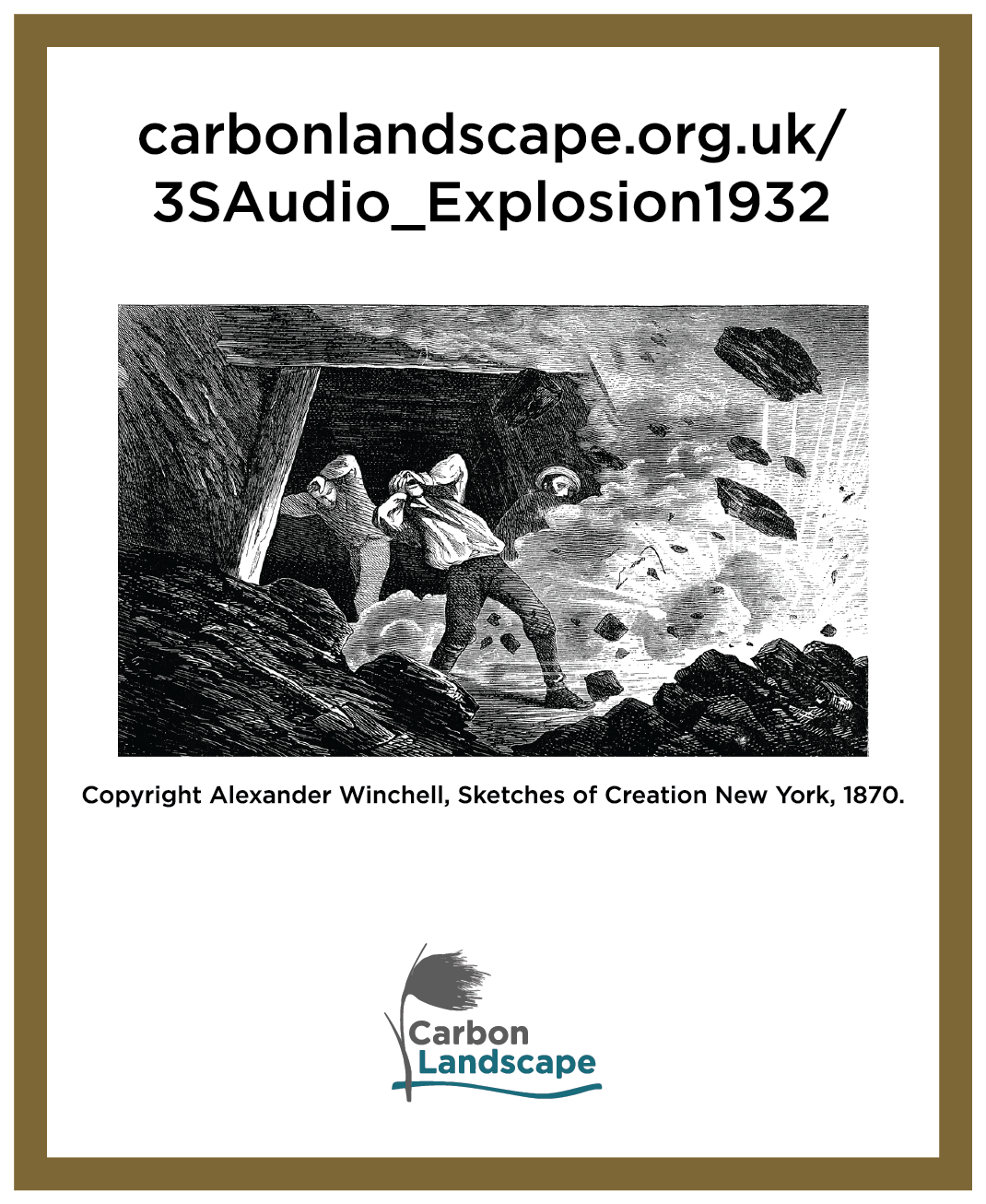[Scroll down for the mp3 file] The Garswood Hall Collieries had a collection of coal mines. We recount the Edge Green Colliery November 1932 disaster. Some listeners may find the audio upsetting. Firedamp are explosive gases, especially methane. Chokedamp are the suffocating gases like carbon monoxide. To improve the air-quality for the miners’ ventilation shafts were used. Miners also took canary birds down in cages to test for choke damp that had no smell. The canary would die if the gases were present. Further hazards included blasting coal with explosives. Firedamp, explosives and choke damp made mining very dangerous. What ignited the firedamp, resulting in a gob fire, in the November 1932 disaster has never been completely established. Immediately the workers organised themselves into rescue parties and heedless of their own safety, rushed into the mine to save their colleagues. This is a re-enactment testimony based on eye-witnesses accounts.
"I am George aged 50 years of Platt Bridge and I am a collier. The working day at the mine is divided into three shifts; day, afternoon and night with about one hundred miners on the night shift. For the previous six weeks there had been worries about firedamp in the mine. Most of what I remember is from when I was recovering at Wigan Infirmary after the rescuers had got me to the surface. On Saturday the 12th November 1932 twenty-seven miners were killed but I was one of the lucky ones.
I was on the night shift at 1,200 yards from the pit bottom. It was 2 am. I remember a terrible flash of flames, a gob fire, that was over quickly. I found myself alone and there was very little to do except sit there and wait. My lamp had gone out I was in total darkness and I drifted in and out of sleep and I was afraid that I would not be found. I was sitting up against a pit prop with the debris of the roof around me but I was too weak to move and it was very quiet in this region of the dead. I looked down the drawing road and was overjoyed to see a light move across and knew that the party was near. One or two more lights appeared and they heard me and got me out of the pit.
I was one of only four men who were brought out of the pit alive but despite the efforts of the rescue workers in the gas filled workings it was not until late on Sunday night that the bodies could be recovered.
At the pit head, beshawled women and silent men waited as news of the disaster spread. They remained throughout Sunday and well into the night despite the cold which blew from the colliery buildings. Mothers and sisters stood in groups some with children in their arms, hoping against hope. Even when the victims were brought out of the pit there was no sound from the crowd. The victims were laid to rest at St. Thomas’ Church of England, Ashton-in-Makerfield, St. Oswald’s Catholic Church, Ashton-in-Makerfield and Downall Green Parish Church."
Sadly mining disasters were common place in Wigan and Leigh with thirty-six recorded across the area between 1830 with the most recent in 1979. If you look to former mining communities, you will find plaques and memorials honouring their those who lost their lives.

